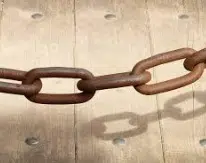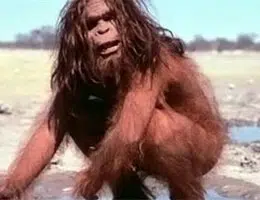 A link is an element that, when linked with others, allows a chain to be formed. The links are usually shaped like a closed curve or a ring . For example: “This chain is too long, we are going to have to remove some links” , “I want a chain with strong links to tie my bicycle so that it cannot be stolen” , “The man managed to break a link and thus was able to free himself ” .
A link is an element that, when linked with others, allows a chain to be formed. The links are usually shaped like a closed curve or a ring . For example: “This chain is too long, we are going to have to remove some links” , “I want a chain with strong links to tie my bicycle so that it cannot be stolen” , “The man managed to break a link and thus was able to free himself ” .
Generally, for chains to fulfill their purpose of fastening or supporting, the links have to be strong : otherwise, they can break and the chain is cut. This leads to the majority of the links being metallic and requiring a shear or other similar tool to break them.
It is important to keep in mind that the use of link not only refers to a physical object: it can also be used symbolically to refer to that which allows linking actions , events, concepts, etc.: “Technology is a key link in our system of production” , “Driving with caution and responsibility is the first link in caring for a car” , “In the food distribution chain, the producers of raw materials constitute the weakest link” .
The idea of a missing link , on the other hand, refers to the missing piece in a sequence or chain. The notion is usually used colloquially with respect to the evolution of species when an evolutionary leap from one species to another is detected. In the case of man , the possible existence of a missing link between non-human primates and Homo sapiens is usually analyzed.
In principle, when we talk about missing link we are referring to those fossils whose forms can be considered "transitional", that is, they denote a passage from one type of organism to another, which we could consider ancestor and descendant. If the intermediate states of both points of evolution are present in the fossils found, then it is assumed that it is a missing link because it provides us with very valuable information to understand the relationship that exists between the other two that are linked to it.
 Despite what it may seem, scientists do not use this expression, but its presence is reserved for certain pseudoscientific publications and some documentaries broadcast on television to refer to any transitional form discovered by archaeologists.
Despite what it may seem, scientists do not use this expression, but its presence is reserved for certain pseudoscientific publications and some documentaries broadcast on television to refer to any transitional form discovered by archaeologists.
Using the term link in the context of archeology implies the acceptance that evolution is a linear process, that is, that there is always a form prior to the current one, one that gave rise to it, and that this succession will continue just as a chain has. its parts linked together in perfect order. Science abandoned this view of the evolutionary phenomenon a long time ago, so that the use of the expression missing link is not correct today.
Since the emergence of the first theories of evolution until today, many archaeological discoveries have been made that speak of a complexity that is impossible to contain within the framework of "the evolutionary chain." Far from there being "missing links" in the history of each species, the modern vision of science recognizes several different phases, which form a widely branching tree.
The concept of the missing link not only gained popularity through findings related to our species , but also in the study of dinosaurs and their supposed distant relatives, today's birds. It is unanimously accepted that certain maniraptor theropods went through an evolutionary process that led them to these animals that, unlike their ancestors, move by air.
